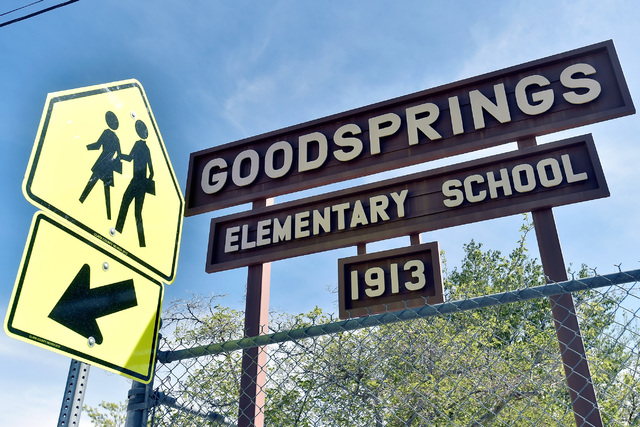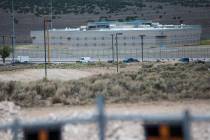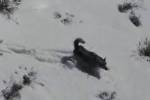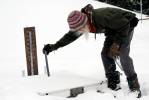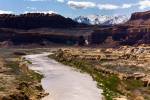Math error delayed action for months on lead-tainted water in Goodsprings
It looks like the people of Goodsprings have dodged a lead bullet.
None of the residents tested for the heavy metal in late March show signs of exposure, according to final results from the Southern Nevada Health District.
The promising news comes amid new revelations about how elevated lead levels in the water system used by Goodsprings Elementary School and the town’s adjacent community center went unaddressed for more than four months.
A simple math error might be to blame.
The Clark County School District regularly collects samples from the water system and reports the findings to state environmental regulators.
When the school district sent its test results to the state in September, the report erroneously showed a systemwide lead level just below the federal action limit of 15 parts per billion, despite an elevated amount of the potentially toxic metal in one drinking fountain at the community center.
The report “wasn’t flagged” by state regulators at the time because the system appeared to be in compliance with federal environmental rules, said JoAnn Kittrell, spokeswoman for the Nevada Division of Environmental Protection.
But that turned out to be a mistake — one that regulators wouldn’t discover until Feb. 2, when the water sampling results were being entered into a state database, Kittrell said.
Under the U.S. Environmental Protection Agency’s so-called 90th percentile rule, a water system must notify the public and undertake a number of actions to curb the spread of lead if the metal is found in concentrations above 15 parts per billion in more than 10 percent of customer taps sampled.
The school district’s water sampling report from September shows a 90th percentile concentration of 14 parts per billion. The actual amount was 16 parts per billion, Kittrell said.
She said the school district was notified of the error on Feb. 5. After that, school officials teamed with the health district to address the problem. They posted public notices, distributed bottled water and shut off the community center drinking fountain, where lead levels were detected at 19 parts per billion.
With help from the school district, health officials also administered voluntary blood screenings to seven children and four adults at Goodsprings Elementary on March 30.
Early last week, the health district announced that none of the schoolchildren showed signs of lead exposure. The test results for the four adults came out Friday and were similarly clean.
“It appears there was no significant exposure in the community,” said health district spokeswoman Stephanie Bethel in an email. “Our screenings did not indicate the need for further testing.”
School district spokeswoman Michelle Booth said school officials are looking into whether there was an error in the water sampling report they submitted to the state in September.
Meanwhile, the school district and the health district are working to pinpoint the source of the lead-tainted water. Samples were collected on April 5 from the entire system, from the source groundwater to the pipes, faucets and drinking fountains at the school and community center.
Those lab results were not available as of Tuesday.
In previous tests of the water system, including the sampling done in September, lead levels within the school itself have been well below the federal action level.
Over the past decade, Kittrell said, many of the tests done on the water system at the school and community center showed no lead of any kind.
Goodsprings is home to about 200 people. Fewer than 10 children take classes at the historic schoolhouse, which opened in 1913 when the town was at the center of a once-productive mining district that produced copper, zinc, gold silver, platinum and lead.
Contact Henry Brean at hbrean@reviewjournal.com or 702-383-0350. Follow @RefriedBrean on Twitter.
RELATED
Schoolchildren tested for lead after water scare in Goodsprings



